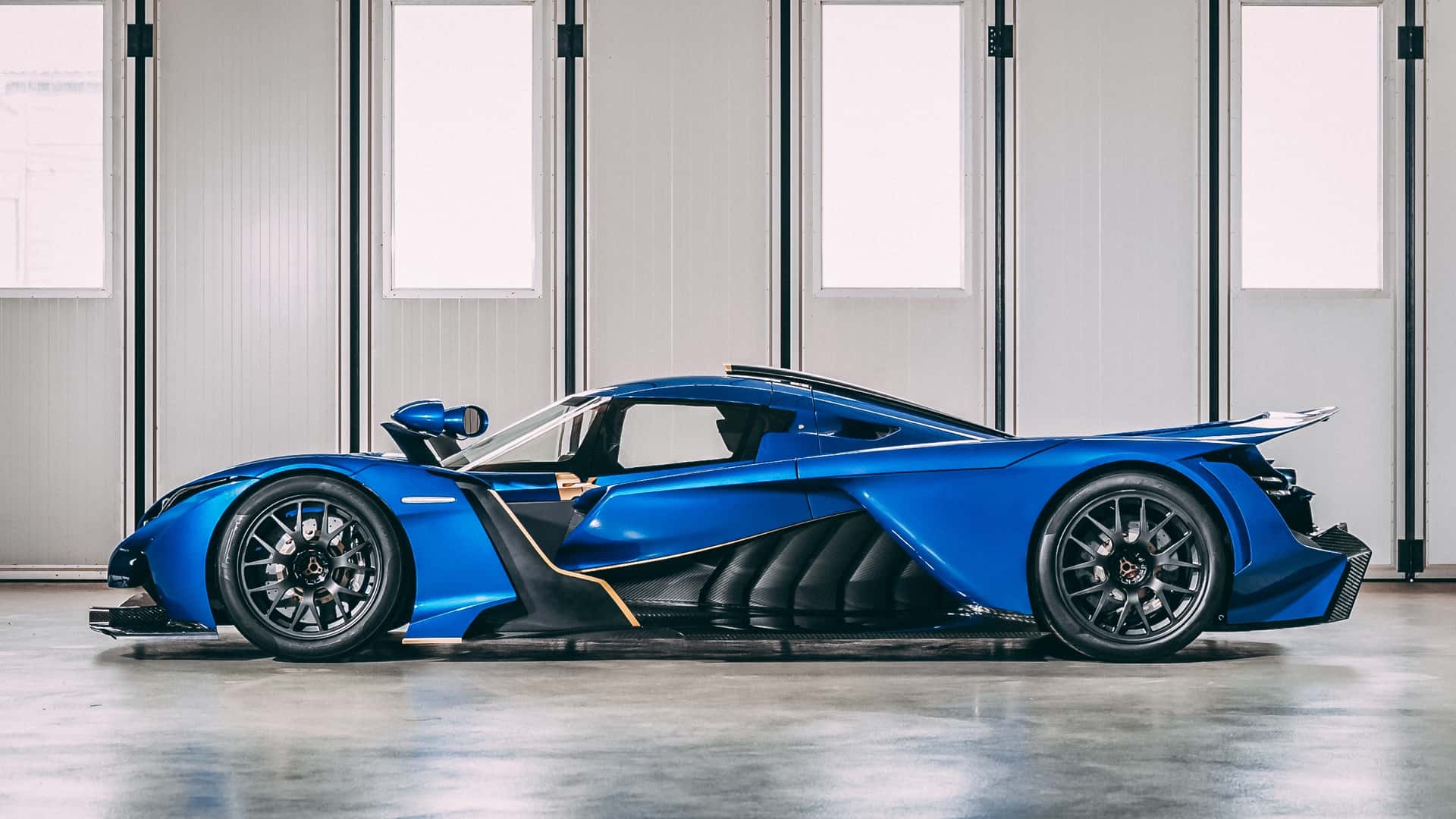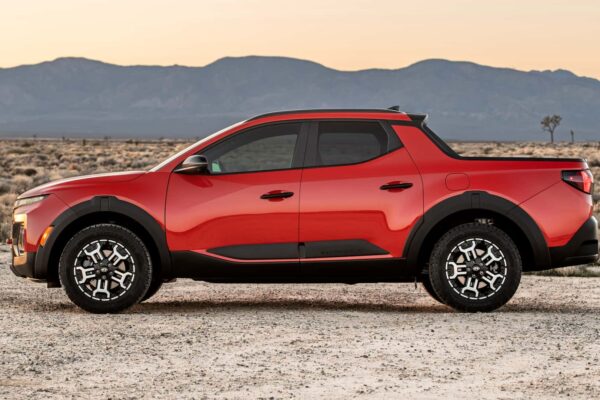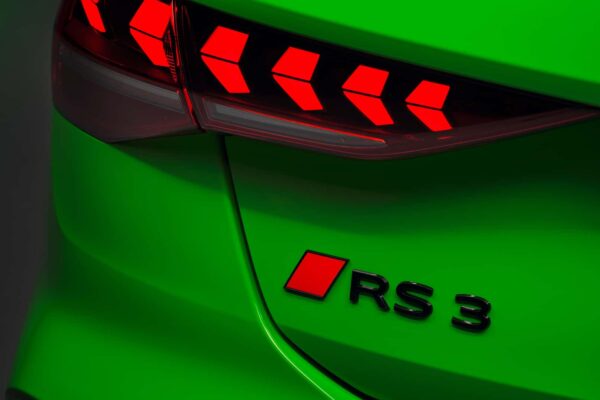Since the dawn of cars, the fraudsters and bad actors have tried to separate the enthusiasts from their money by the appearance of joyful concepts for the first time, and then release them indefinitely. This trend has only accelerated in the past decade with the progress of digital design, artificial intelligence, and social media.
These days, all it takes to collect the requests of the new Hypercar is a set of convincing progress and Instagram handle, with companies that you have never heard about the looks of the look that may never see a road that is not made of pixels.
This is not Braga Mo. The Czech company behind the Bohma with an area of 2200 pounds and 700 hp may not be well well known, but with more than a decade of race and development under its belt, it is Egyptian that the first production car is the first thing that is ready for peak time like anything from Ferrari, McLaren or Lamborghini.
Photo by: Braga
Talk to Motor1 At the Goodwood Festival of speed, each of the company’s chief engineers and its head of marketing participated in the date of development of bohemia, and explained how it ended as the first other than Nissan to use Turbo V-6 from the GT-R.
Although you may not have heard about it, Braga has been present in one way or another since 1908. During the Czech socialist period that lasted from the 1940s to 1989, agricultural vehicles and light trucks were produced with gearboxes and other components under government orders. Since early 2010, her ambitions have focused directly on the race track.
Jean-Martinick, the chief engineer in Braga, joined the team in 2013 to set the R1 CAR-Tub-Tub-Tub-Tub Carbon. The company witnessed a place in the market in a supercar on the superior track day, so Martinek built an initial model called R1R and began to transfer it to circles throughout Europe. As he tells her, people loved the 700 -kilogram car weight, but they were skeptical of its narrow cabin, the lack of air conditioning, and a cylinder quad -cylinder engine.
Braga carried out the first public relations splash in 2016, with the permission of Swedish skirt John Olson. The company was looking for investors, John was enthusiastic with money with money and a reputation for daily sports cars in all circumstances.
“I have sent a text message to John like,” Martinic recalls. “Olson has achieved one better, as he asked R1R to drive from Monaco to his home in Marbella, Spain-a distance of more than 1,200 miles in a full racing car.
Olson offered the car on his blog, and it seems that he has a lot of requesting it again-this time for the ice race in northern Sweden, 1200 miles from the house in a weather between 24 degrees. The typical electronic control unit was frozen once in the cold and it had to be heated, but regardless of the hiccups, R1R performed flawless performance.
Almost at that time, Braga was subjected to new ownership again, and the company changed trends in its concept on the roads. While the R1R had a “one plus one” seats with a central driving position and an animated orientation column to allow passengers, customer notes dictate two full size seats. Customers also demanded air conditioning and more than amenities more creatures than naked race.
Almost at that time, Aston Martin revealed Falki, overcoming Braga on the punch with a street race. “This was the best thing that could happen,” said Martinic. Suddenly, you had Mr. Jww entering the seat and saying: “This is like F1 (car). She normalized her. “
Building Buima
Braga spent the next eight years to develop and test Bohima. He jumped through organizational holes and engineering challenges were dealt with, such as how to design the windshield spaces for the twisted windshield, or how to keep the narrow cabin as possible for the air dynamica, while not giving the driver and passengers a lot of the elbow room. (The solution for the latter is the arrangement of intertwined intelligent sitting that puts the driver’s elbow over the rest and before the passenger.)
But perhaps the most interesting engineering debate is what the engine should be a bohemian.
Photo by: Braga
Praga is the first company that licenses VR38Dett V-6 3.8-liter, R35 GT-R The UK is compatible with the UK IAIN Litchfield, then massaging it to 700 hp stable for use in Bohima. But the decision to go with the V-6 did not come easily.
“When we built the legal version of the R1R (Road-), it was four-cylinder Turbo,” Martinek told Motor1. “And when we were thinking about production, I wanted to get rid of turbo due to heat, in addition to a better voice, and everything. So I wanted (A) V-6 natural because it would be the same strength, the same weight, but naturally.”
Braga is close to Nissan about providing it with his natural V-6S font. Very quickly, the Japanese company agreed, but Martinique has not ended.
I asked a question: “What if – just what if – we are thinking about some of the special version. What about the GT -R engine?
I asked a question: “What if-just what if we are thinking about a special version. What about the GT-R engine? As the chief engineer of Braga remembers, the request was initially met with discontent: “There is no way, no.
With the transformation of the Braga concept from R1R to Hypercar from two seats, a million dollars, VQ will not cut normally. Praga returned to Nissan around the GT-R V-6 while approaching BMW, Mercedes and Audi for engine options as well.
Designed about V-10
While the company is waiting for a word from Nissan, Audi agreed to the Braga request to get the V-10 R8 from R8. “This is when Nissan returned to us and said:” We held a meeting of the session and decided to offer you the engine. “So we bought each of the engines.”
But when Braga discussed the relative advantages of the engines, it still has a car to design it. Not sure how things will go, the company designed the carbon structure in Boheima to accommodate the larger V-10.
The car is designed around the V-10 because we knew that we can put V-6 as well.
“We had both both the engines,” Martinick explained. “So the car was designed around the V-10 because we knew that we can put V-6 as well.”
We know which direction of Graga gold-but why do you give up a natural scream naturally in a lightweight car?
“In the end, that was the reasons for emissions, the support we could get from the iain (Litchfield), but it was also the support we could get from the (OEM) factories.” Martinique also cited spices as a major factor. “Yes, V-10 looks better on paper, (and) in sound,” admit. “But it is 600 brake horse force and that’s it. This (V-6) is a lead-resistant and power-resistant engine-is the maximum.”
When you see it, you expect almost (A) screams V-10. It gives the car its unique personality.
I asked the sales and marketing director of Braga Mark Harrison if the customers were postponed through “only” they have a GT-R engine in Hypercar $ 1.5 million. On the contrary, he said it was not a problem.
“Everyone you spoke to in the United States, when they said,” What is the engine? And he told them, they said: “I got GT-R as reliable.
Martinek admits that the turbocharged heart is somewhat unexpected given the radical appearance of Bohma – but this is not necessarily a bad thing. “When you see it, almost expects (A) screams V-10,” he told Motor1. “It gives the car its unique personality.”



